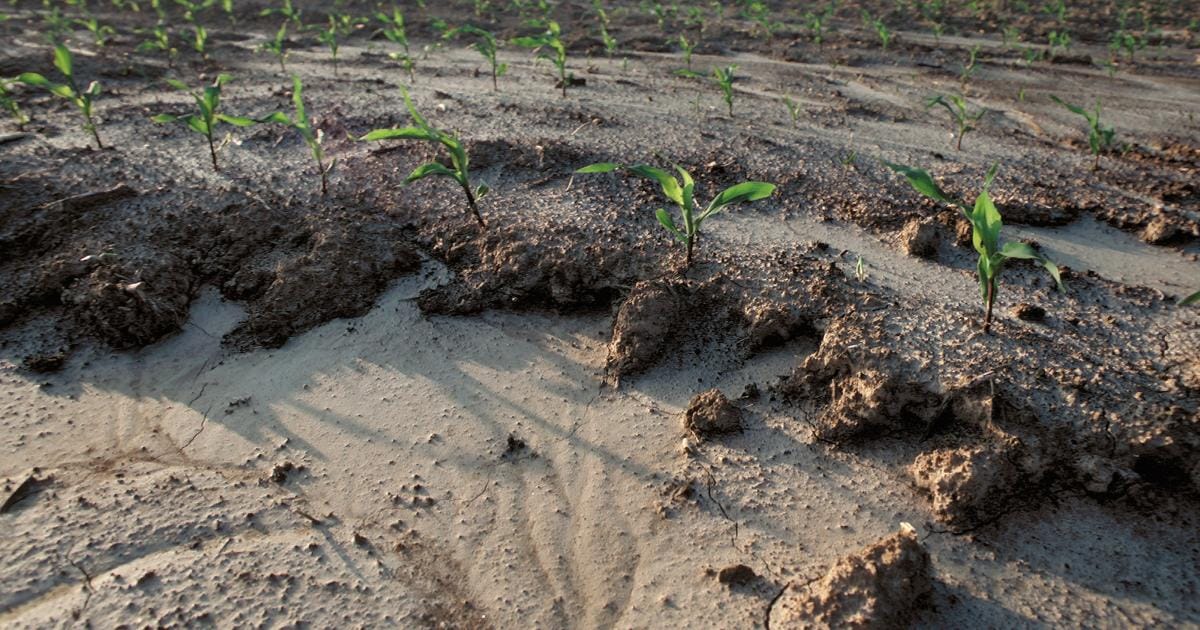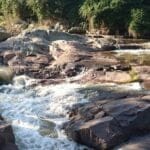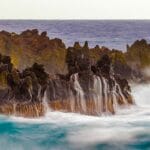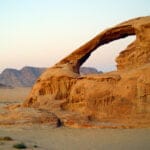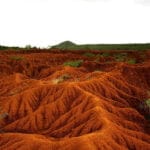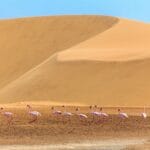Erosion, a tireless sculptor, is constantly at work shaping and reshaping the Earth’s surface. This powerful force is responsible for the breathtaking landscapes we see all around us, from towering mountains and deep valleys to rugged coastlines. Let’s delve into the fascinating world of erosion and discover how it relentlessly carves and molds our planet, transforming ecosystems and impacting communities.
What Type of Changes Does Erosion Cause?
Imagine standing on a beach, waves crashing at your feet, pulling grains of sand back into the ocean. This is a simple illustration of erosion in action. It’s the Earth’s way of moving materials around, constantly reshaping the landscape over time. Think of erosion as a sculptor, but instead of chisels and hammers, it uses wind, water, and even ice to carve away at the Earth’s surface.
Water: The Master Sculptor
Water, in its many forms, plays a starring role in erosion. Rain, in its simplicity, can be surprisingly powerful. As raindrops strike the ground, they loosen soil particles. When enough water accumulates, it flows downhill, carrying those particles with it. This process forms the winding rivers and streams that carve their way across the land. The force of fast-flowing water, like that found in rapids, erodes much faster than the slow, steady movement of water in a lake. Over time, this can carve out dramatic canyons and shape entire landscapes.
But water’s influence goes beyond its physical force. It can also dissolve rock, much like how acidic drinks can, over time, erode tooth enamel. This process, known as chemical weathering, is responsible for the creation of many fascinating geological formations. Caves adorned with stalactites and stalagmites? You can thank the erosive power of water for those.
Wind: The Silent Shaper
While often overlooked, wind is a powerful force in shaping the Earth. Deserts, with their vast sand dunes, offer a testament to wind’s sculpting abilities. Wind picks up tiny particles of sand and dust, transporting them across vast distances. This process is what gives deserts their unique landscapes, from sculpted arches and mesas to seemingly endless stretches of rippling sand dunes.
Wind also acts as nature’s sandblaster. When carrying sand, wind can wear away at rock surfaces, much like sandpaper slowly smoothing a rough edge. This process, over time, can create intricate rock formations and dramatically alter existing landscapes.
Ice: The Glacial Sculptor
Ice, in its glacial form, is a force of nature that carves out valleys and shapes mountains. Glaciers, those massive, slow-moving rivers of ice, creep across the land, carving out U-shaped valleys as they go. Imagine dragging a giant ice cube across a muddy field – the impact would be undeniable. Glaciers, on a much grander scale, leave similar marks on the Earth. They are responsible for many of the dramatic valleys we see in mountainous regions.
Glaciers don’t just carve, they also carry. As they move, they pick up rocks, soil, and debris, transporting these materials vast distances. This process, similar to a conveyor belt, redistributes material, depositing it in new locations and altering the lay of the land.
Humans: Shaping the Landscape, For Better or Worse
While natural processes constantly reshape our planet, humans have become significant contributors to erosion. We’ve often unintentionally sped up the process, leading to more rapid and sometimes detrimental changes.
Deforestation, the clearing of forests for timber or agriculture, is a prime example. When we remove trees, we leave the soil exposed and vulnerable to erosion by wind and rain. It’s like removing a natural shield that protects the ground. Similarly, overgrazing, where livestock graze excessively in one area, can strip the land of vegetation, leaving it vulnerable to the elements and accelerating erosion.
Climate change is intensifying erosion globally. As temperatures rise, we experience more extreme weather events like heavy rainfall and more powerful hurricanes. These events lead to increased erosion, washing away valuable topsoil and altering coastlines.
The Two Sides of Erosion
Erosion is a double-edged sword, capable of both creation and destruction. It’s responsible for some of the most breathtaking landscapes on Earth: towering mountains, dramatic canyons, and sweeping coastlines. These features are the result of erosion over millions of years. Erosion is also the process that created the fertile soil we depend on for agriculture.
However, erosion can be a destructive force. Unchecked erosion leads to soil loss, a significant problem for agriculture. It can damage ecosystems, clog waterways with sediment, increase the risk of landslides, and lead to the loss of valuable farmland.
While we can’t stop erosion entirely, we are not powerless against it. Several strategies can mitigate the negative effects of erosion. Planting erosion-resistant vegetation helps to anchor the soil, preventing it from being easily washed or blown away. Sustainable farming practices can reduce soil disturbance, and global efforts to combat climate change can help to reduce the intensity of extreme weather events that often lead to increased erosion.
The next time you encounter a weathered rock formation, a winding river, or even a dust storm, take a moment to consider the power of erosion. It’s a constant reminder that our planet is in a constant state of flux, shaped by forces both large and small.
Why is soil erosion a physical change?
We’ve discussed how erosion reshapes the Earth, but why is soil erosion classified as a physical change rather than a chemical one? The answer lies in what happens to the soil itself during the process.
Imagine a wave crashing onto a sandy beach. The wave picks up sand and carries it away, but the sand’s chemical composition remains unchanged. Similarly, during soil erosion, wind, water, or human activities like construction relocate the soil without altering its chemical makeup. The soil is simply being moved from one place to another.
Think of it like dismantling a Lego structure. You’re not melting the bricks or changing their chemical properties; you’re merely separating and rearranging them. Soil erosion operates on a similar principle; it’s a physical rearrangement of the material.
While erosion is a natural process, human activities can significantly accelerate it. Deforestation, overgrazing, and unsustainable farming practices strip away protective vegetation, making the soil more vulnerable to both wind and water erosion.
Soil is essential for a healthy planet. It provides a foundation for plants, filters our water, and helps to regulate the climate. When we lose soil to erosion, we experience a cascade of negative consequences, including decreased agricultural productivity, increased pollution in our waterways, and, in some cases, desertification.
What Type of Changes Does Erosion Cause: Physical Changes, Chemical Changes, Electrical Changes, Magnetic Changes?
We’ve established that erosion reshapes the Earth, but what’s happening to the rocks and land during this process? Erosion primarily causes physical and chemical changes, much like how sculpting a material changes its shape and potentially its texture.
Physical Changes: A Sculptor’s Chisel
Physical erosion works much like a sculptor chipping away at a block of stone. Wind, rain, and ice wear down rocks over time. Imagine tossing a rock into a fast-moving river. Eventually, repeated collisions with other rocks and the force of the water will break it down into smaller pieces. This process creates sediment – sand, silt, and even smaller particles. Gravity then acts on these sediments, pulling them downhill and further shaping the landscape. Over time, valleys deepen, mountains shrink, and the rocks themselves change. Sharp edges become rounded, and their size diminishes – all thanks to physical erosion.
Chemical Changes: Dissolving the Earth
Water, in addition to its physical force, plays a crucial role in chemical erosion. Water, especially slightly acidic rainwater, can dissolve minerals in rocks. It’s a slower process, but over time, it can be just as dramatic as physical erosion. Imagine pouring vinegar on baking soda – the reaction is immediate and visible. Similar reactions occur in nature, albeit at a much slower pace.
Chemical erosion can transform entire landscapes. Limestone, susceptible to dissolving in water, can form extensive cave systems over time. Even seemingly indestructible rocks like sandstone can be sculpted into unusual formations by water slowly altering their chemical makeup.
Electrical and Magnetic Changes: Minimal Impact
While erosion has a profound impact on the Earth’s surface, there’s no compelling evidence to suggest that it directly causes significant electrical or magnetic changes on a large scale. These phenomena are primarily related to processes occurring within the Earth’s core and other deep geological activities.
Examples of Erosion in Action:
- The Sahara Desert: This vast expanse of sand dunes vividly illustrates the power of wind erosion. Wind has sculpted the landscape, carrying away finer particles and leaving behind the iconic dunes.
- Yosemite Valley: The majestic, U-shaped Yosemite Valley, a testament to the power of glacial erosion, was carved out by glaciers over millions of years.
- Sea Cliffs and Arches: Dramatic sea cliffs and arches, common features along coastlines, are the result of relentless pounding by waves, slowly eroding the rock face.
Key Takeaways:
- Erosion is a continuous process that shapes our planet through both physical and chemical change.
- Physical erosion breaks down rocks, while chemical erosion alters their composition.
- These processes, occurring over vast periods, have created the landscapes we see today.
While we’ve made significant strides in understanding erosion, there’s still much to learn. Scientists are continually studying how different erosion types interact and the long-term impact of these processes, particularly in a changing climate.
What type of change does erosion cause in Quizlet?
Quizlet, a popular online learning platform, often uses erosion as an example to illustrate the differences between physical and chemical changes.
Shifting Sands and Carving Canyons: Erosion’s Physical Transformations
Think back to the example of the river carving out a canyon. Over time, the water isn’t just flowing; it’s chipping away at the rock, slowly carving out a new path. That’s physical erosion at work! It’s the driving force behind the impressive canyons, valleys, and other dramatic landforms we see in nature.
Wind is another key player in physical erosion. Sand dunes are like wind sculptures, constantly being reshaped by its force. Ice, often moving at a glacial pace, can grind down mountains, leaving behind distinctive U-shaped valleys.
Chemical Transformations: The Subtle Power of Dissolution
Erosion isn’t always about breaking things down physically; it can also change the very composition of rocks through chemical reactions. Consider the process of rust. Rust is a form of oxidation, a type of chemical weathering where iron reacts with oxygen in the presence of water. Rocks containing iron undergo similar processes, resulting in their characteristic rusty red color.
Water also plays a key role in chemical erosion. It might seem counterintuitive, but plain water can dissolve rock, especially limestone. This process is how caves and sinkholes form – water slowly dissolves the rock over time, creating these unique underground formations.
Erosion: A Force of Creation and Destruction
Erosion, then, is responsible for some of the most breathtaking landscapes on Earth. It’s a key player in creating the fertile soil that sustains life and can reveal hidden treasures like fossils and unique rock formations. It’s important to remember, however, that erosion can also be destructive. It can lead to landslides, erode coastlines, and even damage buildings.
Scientists continue to study the complexities of erosion. It’s a intricate process, but one thing is clear: it’s a powerful force that shapes and continues to shape our planet.
What Does Erosion Do?
Imagine erosion as the Earth’s way of rearranging its materials. It’s a natural process where wind, water, and ice gradually wear away and move bits of rock and soil. A river carving its path, smoothing out rocks and carrying tiny particles downstream, is erosion in action. It’s happening everywhere, all the time, constantly reshaping the landscapes we see.
Erosion, however, isn’t always a slow and steady process. Human activities can significantly accelerate it. Clearing forests for farming or construction exposes the soil, making it vulnerable to being swept away by wind and rain. It’s like removing the anchors that hold the ground in place. When this happens, erosion can quickly become a significant problem.
Erosion: A Closer Look at its Impact
Let’s take a closer look at the impacts of erosion. One of the most critical issues is the loss of fertile topsoil. This nutrient-rich layer is essential for plant growth. When topsoil is eroded, it’s incredibly challenging for vegetation to recover. This loss affects our food supply and can lead to desertification, turning once-fertile land into barren deserts.
Erosion also has the potential to intensify the destructive power of natural disasters. Landslides and mudslides are often triggered by heavy rainfall on bare slopes, causing severe damage to homes, roads, and communities. The sediment washed away by erosion often ends up in rivers and lakes, polluting waterways, harming aquatic life, and even clogging reservoirs that provide us with drinking water.
Erosion also affects our oceans. Coral reefs, vital ecosystems teeming with life, are particularly vulnerable. Sediment from erosion can smother coral, blocking the sunlight it needs to survive. This not only threatens these valuable ecosystems but also the livelihoods of people who depend on them for fishing and tourism.
Can We Put the Brakes on Erosion?
While we can’t stop erosion entirely, we can take steps to slow it down and protect our planet. One of the most effective strategies is planting trees and other vegetation. Their roots act like anchors, holding the soil in place and preventing it from being carried away by wind or water.
Building terraces on slopes, creating step-like structures, can help to slow down water flow, giving it time to be absorbed into the ground rather than rushing downhill and carrying soil with it. Mulching – covering bare ground with organic material like wood chips or straw – provides a protective layer that shields the soil from the impact of rain and wind. Mulch also helps to retain moisture and improve soil health, making it a valuable tool in erosion control.
Erosion is a complex issue, but scientists are constantly learning more about how it works and developing new methods to manage it. From erosion control blankets made from natural fibers to innovative land management practices that prioritize soil health, we’re finding new ways to work with nature to minimize the negative impacts of erosion.
Wrapping Up: Protecting Our Planet
Erosion is a powerful force that has shaped our planet over millions of years. While we can’t eliminate it, understanding its impacts and taking action to prevent it can protect our environment and ensure a healthier future for generations to come.
What Type of Change is Erosion?
Our planet is in a constant state of change, continuously reshaping and reforming itself. Erosion is one of the key processes involved in this ongoing transformation. Think of it as nature’s sculptor, slowly carving out landscapes and shifting earth materials.
Think of a river flowing down a mountain. Over time, it carries tiny bits of rock and soil, gradually carving a whole valley into the mountainside. That’s erosion in action!
Erosion isn’t always as dramatic as carving a canyon. Sometimes it’s a slow, gradual process, like wind slowly wearing down a rock face. But whether it’s a sudden, dramatic shift or a slow, steady change, erosion is happening all around us.
There are two primary ways that erosion works its magic:
- Physical Erosion: Physical erosion is like taking a hammer to a rock. It’s about force! Wind, water, and ice can break rocks and soil into smaller pieces.
- Chemical Erosion: This type of erosion is more subtle. It’s like using a dissolving agent. When acidic rain or chemicals in the environment react with rocks and soil, they slowly break them down over time.
Erosion is a natural process that’s been happening for billions of years. It’s a vital part of how our planet functions. However, human activities can sometimes speed up erosion, disrupting the natural balance and leading to unintended consequences. Cutting down trees, farming without protecting the soil, and building roads and cities can all contribute to increased erosion.
Why Should We Care About Erosion?
Erosion might seem like a distant process, but its effects are far-reaching:
| Problem | Description |
|---|---|
| Soil Loss | When topsoil, the most fertile layer of soil, is carried away, it makes it harder for plants to grow, impacting farming and the environment as a whole. |
| Water Pollution | Erosion can wash pollutants, including fertilizers, pesticides, and animal waste, into rivers and lakes, harming the water we drink and the creatures that live there. |
| Habitat Destruction | As erosion changes the landscape, it can destroy the homes of plants and animals, leading to biodiversity loss. |
| Increased Risk of Natural Disasters | Erosion can destabilize slopes, making areas more vulnerable to landslides and flooding, especially during heavy rains. |
The good news is that we can take steps to control erosion and protect our planet.
Solutions for Erosion Control
Here are some of the most effective methods for minimizing erosion:
- Plant Trees and Vegetation: Roots act like natural anchors, holding the soil in place and preventing it from being easily carried away by wind or water.
- Practice Terracing on Slopes: Creating flat steps, or terraces, on hillsides can slow down water flow and reduce erosion.
- Build Retaining Walls: Retaining walls provide support for slopes, preventing soil from slipping away.
- Use Erosion Control Blankets: These biodegradable blankets, often made from natural fibers, help to stabilize the soil and allow vegetation to grow.
Perhaps the most crucial tool in our fight against erosion is education. The more people understand about erosion and its effects, the more likely we are to make choices that protect our planet.
Our understanding of erosion is always evolving. Scientists are constantly making new discoveries and refining existing theories. By staying curious, continuing to learn, and working together, we can help to protect our amazing planet.
What Changes Does Erosion Cause?
Erosion is a powerful force that shapes our planet, and it does so in a myriad of ways. It’s more than just rocks tumbling down a hillside; it’s a process of continuous change and transformation.
Imagine a mountain range. Over vast stretches of time, wind, rain, and ice gradually wear away at those majestic peaks. This is physical erosion at work – it grinds down surfaces, smoothing rough edges. The force of rushing water in rivers carves out valleys, while glaciers, with their immense weight and slow, steady movement, can carve out entire basins, creating breathtaking landscapes like Yosemite Valley.
But erosion isn’t always a dramatic, visible spectacle. Chemical erosion works more subtly, transforming the very composition of rocks. Rainwater, often slightly acidic due to its interaction with atmospheric gases, can slowly dissolve certain types of rock, such as limestone. This process is what creates those awe-inspiring cave systems found throughout the world. It’s a constant reminder that change is often happening even when we can’t see it.
While erosion is a natural and essential process, human activities can significantly accelerate it. When we clear forests for development or farming, we expose the soil, making it vulnerable to wind and rain erosion. Dramatic images of dust storms or muddy rivers after heavy rainfall are often signs of accelerated erosion, and these events can have serious consequences for ecosystems and food production.
Scientists are continuously working to understand the complexities of erosion, particularly as the climate changes. They are studying erosion rates, the differences in how soil types erode, and what measures we can take to mitigate the negative impacts of erosion.
It’s a reminder that while erosion is natural, we have a responsibility to ensure that it doesn’t happen faster than nature intended. By understanding this powerful force, we can make more informed decisions about how we interact with our planet.
What are the Physical Changes of Soil Erosion?
Soil erosion, the process of soil being moved by wind, water, or ice, results in significant physical changes to the landscape. Here’s a closer look at how these processes work:
Water Erosion:
Imagine a heavy downpour. As raindrops hit bare soil, they dislodge soil particles, breaking apart the soil structure. This loose soil is easily carried away by runoff, the water flowing over the land’s surface. The faster and more voluminous the water flow, the greater its erosive power.
Here are several ways water erosion occurs:
- Splash Erosion: Raindrops, despite their small size, can displace soil particles upon impact, particularly if the soil is bare or loosely compacted.
- Sheet Erosion: When water flows over the land in thin, broad sheets, it carries away a thin layer of topsoil. This type of erosion is often subtle but can result in significant soil loss over time.
- Rill Erosion: As runoff concentrates, it forms small channels called rills. These channels, while initially small, can quickly grow in size and depth, becoming gullies.
- Gully Erosion: Gullies are channels that are too large to be smoothed over by normal tillage practices. They are a serious form of erosion that can carve up landscapes, damage farmland, and alter drainage patterns.
Wind Erosion:
Wind erosion is most common in dry, arid regions where vegetation is sparse, and the soil is loose. The wind picks up and carries away soil particles, often transporting them long distances. Here’s how it happens:
- Saltation: Wind causes soil particles to lift into the air and bounce along the surface. As these particles collide with the ground, they dislodge more particles, creating a chain reaction.
- Suspension: Very fine soil particles, like silt and clay, can be lifted high into the air by the wind and carried long distances. This process is what creates dust storms.
Ice Erosion:
While less common than water and wind erosion, ice, particularly in its glacial form, is a powerful erosive force. Glaciers move slowly over land, carving out valleys and transporting huge amounts of rock and soil. Here’s how it works:
- Abrasion: As glaciers move across the land, they pick up rocks and debris. These materials act like sandpaper, grinding away at the bedrock and carving out valleys.
- Plucking: Meltwater at the base of a glacier can seep into cracks in the rock. When this water freezes, it expands, breaking up the rock. These broken fragments are then picked up and carried away by the glacier.
The Impact of Physical Erosion:
Physical erosion can have a profound impact on the landscape, creating new landforms, altering drainage patterns, and, unfortunately, often leading to the loss of valuable topsoil. It’s a reminder that while erosion is a natural process, understanding its mechanisms can help us to better manage our land and protect this vital resource.
How Does Physical Erosion Cause Soil Erosion?
Physical erosion, as we’ve discussed, is the process of rocks and soil being broken down by natural forces. It’s the driving force behind soil erosion, the displacement of the uppermost layer of soil. Let’s explore how these forces act to cause soil erosion:
Water: A Force of Erosion
Water, in its various forms, is the most significant agent of physical erosion and the leading cause of soil erosion. Here’s how it works:
- Raindrop Impact: Raindrops, though seemingly small, strike the ground with surprising force. This impact can dislodge soil particles, breaking apart the soil structure.
- Surface Runoff: As rainwater accumulates, it flows over the land’s surface, carrying away loose soil particles. The faster the water flows, the greater its erosive power.
- Stream and River Flow: Over time, surface runoff carves out channels, forming streams and rivers. The constant flow of water in these channels continues to erode the soil, carrying it downstream.
Wind: Carrying Away the Earth
Wind, particularly in dry, open areas with little vegetation, acts as nature’s broom, sweeping across the land and carrying away loose soil particles. This process, known as wind erosion, is most effective on:
- Dry, Loose Soil: Dry soil particles are lighter and easily lifted and carried by the wind.
- Bare Soil: Vegetation acts as a windbreak, slowing down wind speed and protecting the soil. When soil is bare, it’s directly exposed to the erosive forces of the wind.
Ice: Carving and Transporting
Glaciers, massive rivers of ice, might seem immobile, but they’re constantly on the move, driven by gravity. As they creep across the land, they cause significant erosion through:
- Glacial Abrasion: Rocks and debris embedded in the ice at the base of a glacier scrape against the bedrock, acting like sandpaper and grinding away at the Earth’s surface.
- Glacial Plucking: As glaciers move, they can pluck out chunks of rock, incorporating them into the ice and carrying them away.
Human Impact: Accelerating Erosion
While physical erosion is a natural process, human activities often accelerate it, increasing the rate of soil erosion:
- Deforestation: Trees and other vegetation act as natural windbreaks and their roots help to hold the soil in place. Removing trees and vegetation increases the land’s vulnerability to wind and water erosion.
- Overgrazing: When livestock graze excessively in one area, they can strip the land of vegetation, leaving the soil exposed to erosion.
- Construction and Development: Construction activities often disturb the soil and remove protective vegetation, making the land susceptible to erosion.
The Importance of Understanding Physical Erosion
Understanding the forces behind physical erosion is crucial for developing effective soil conservation strategies. By implementing measures to reduce human-induced erosion and protect the soil, we can help to ensure the long-term health of our planet.
- Unveiling the Enigma: Mansoureh Khojasteh Bagherzadeh’s Public Appearances & Private Life in Iran - July 18, 2025
- Unveiling the Mystery: Mansoureh Khojasteh Bagherzadeh’s Husband: A Rare Glimpse into a Private Life - July 18, 2025
- Unveiling Masoud Khamenei’s Mother: Power, Influence, and Iran’s Future - July 18, 2025
